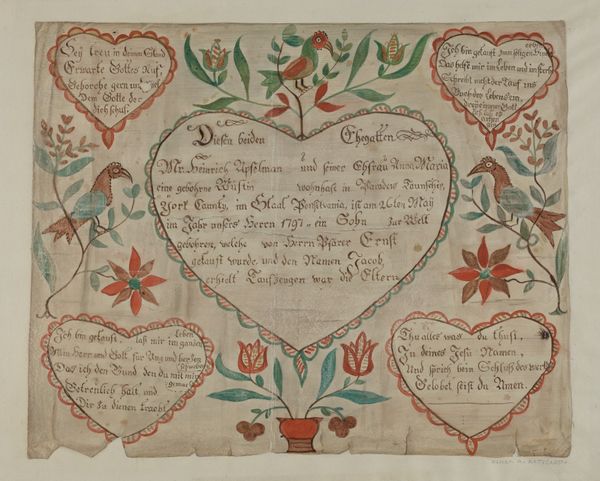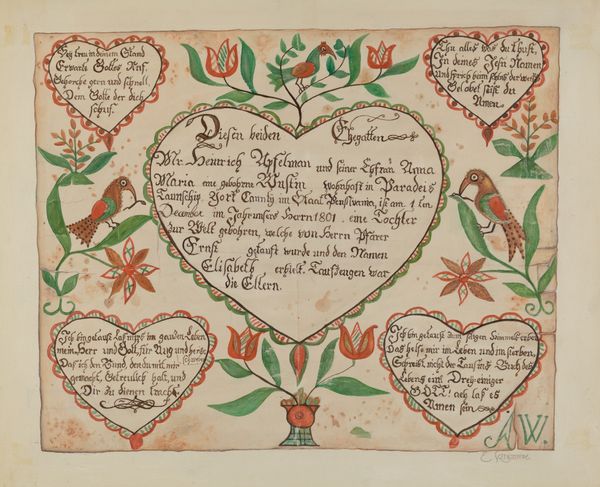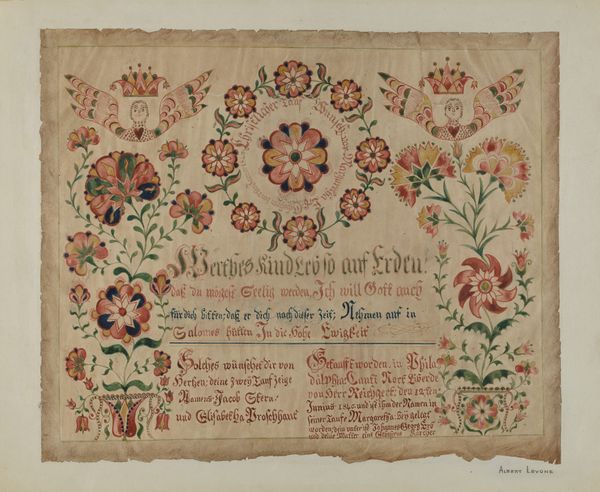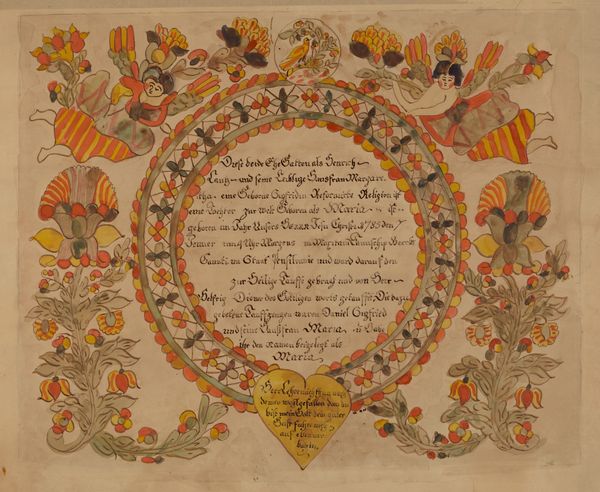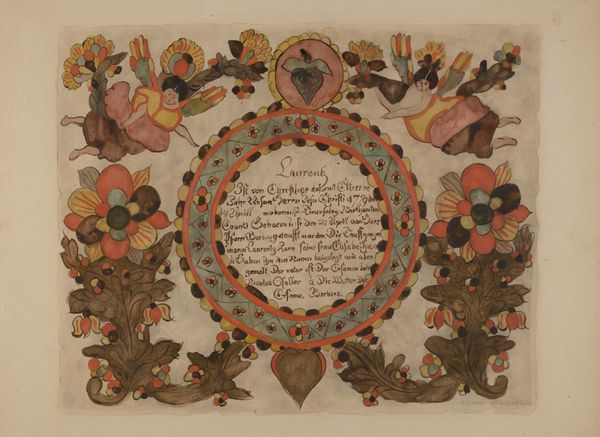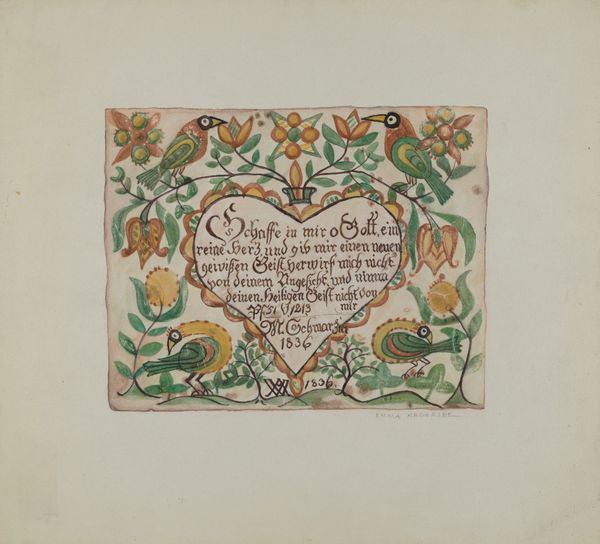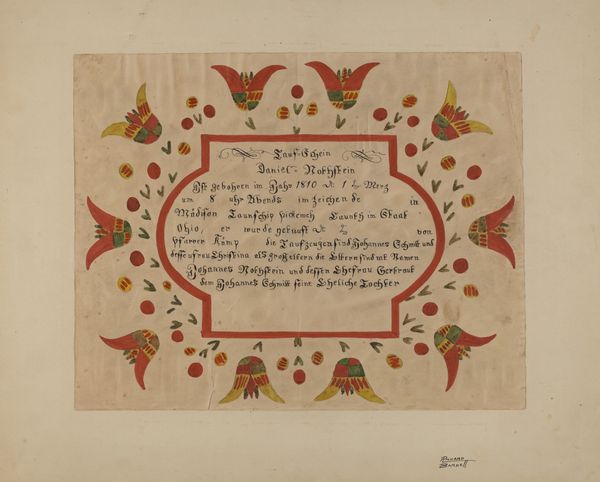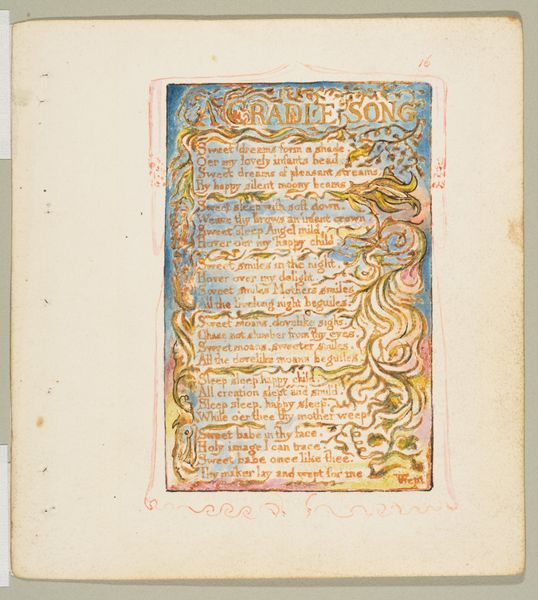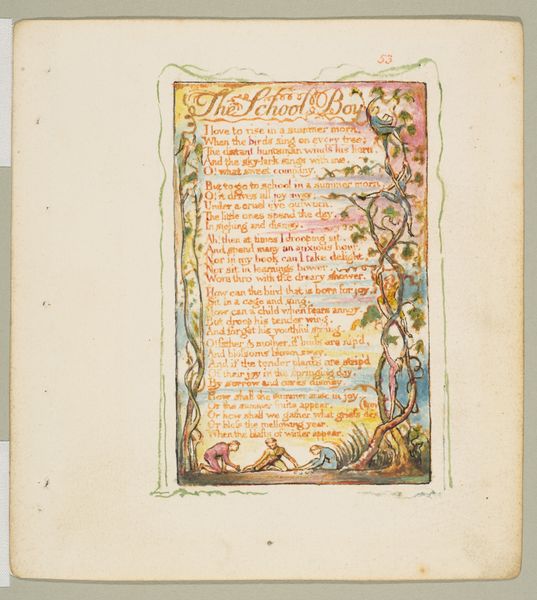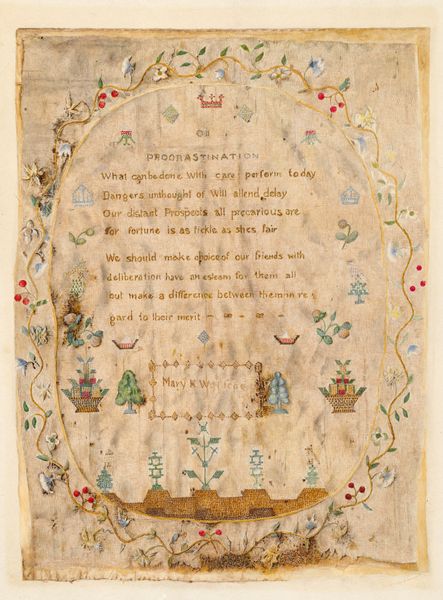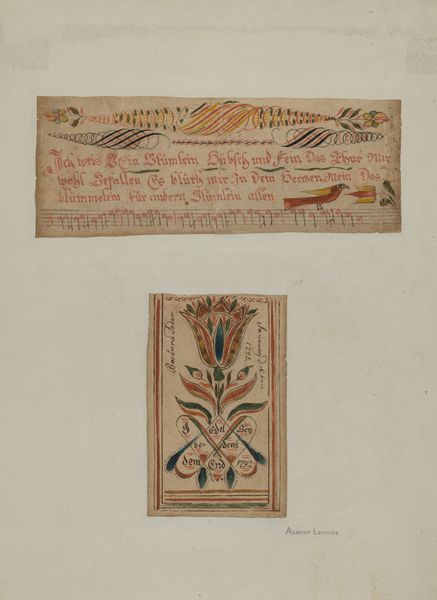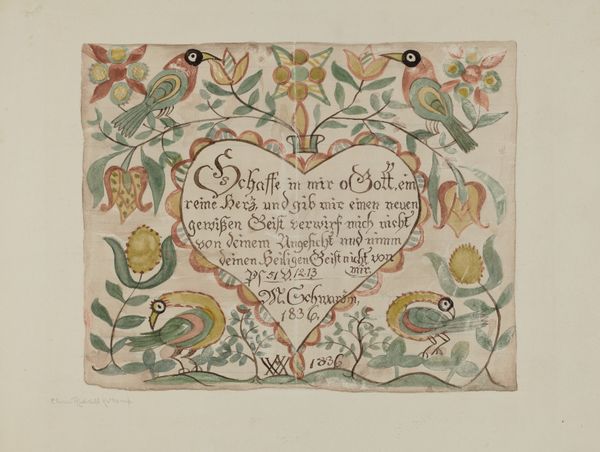
drawing, paper, watercolor
#
portrait
#
drawing
#
paper
#
watercolor
#
coloured pencil
#
folk-art
Dimensions: overall: 40.8 x 47.5 cm (16 1/16 x 18 11/16 in.) Original IAD Object: none given
Copyright: National Gallery of Art: CC0 1.0
Curator: This piece, "Pa. German Fraktur," comes to us from between 1935 and 1942, crafted by Albert Levone. It's a drawing on paper using watercolor and, it appears, colored pencil. What strikes you about it initially? Editor: It has such a beautiful, quaint aura about it. It feels very much like looking into another world—a world that cherished beauty and faith together, woven intricately. Do you think "aura" is too much? Curator: Not at all. Fraktur is an art form rooted in Pennsylvania's German communities. It's more than decoration; it's intertwined with documentation. Think of it as visual storytelling, celebrating births, baptisms, and sometimes even serving as family records. The text at its heart is not merely text, it’s a history. Editor: I see! So the round frame enclosing the inscription gives it a kind of eternal, sacred feeling. Are the colors chosen randomly? Why so much red, blue and yellow? And why are the objects around the inscription only suggestive of objects? Is there anything about these illustrations that tells the story visually? Curator: Each color, each symbol has its own story in Fraktur. Tulips often symbolize faith or hope, while the circular motifs—like the one encircling the text—can represent eternity. Color choices might reflect personal preferences, regional traditions, or even availability of pigments. It is folk art, so rather than concerning themselves with “hyperrealism” these artist rendered things from memory or feelings rather than photographic references. Editor: Thinking about the level of decoration, would you say this form of expression acted as a visual reminder of community identity, like a gentle push towards collective memory in a world changing fast? Curator: Precisely. These aren't just pretty pictures; they are affirmations of identity, belonging, and faith, passed down through generations. In an ever-shifting world, they anchored communities to their past while blossoming with individual artistry. It’s interesting that the artist who produced it created the art decades after it originally started; Perhaps Levone himself was trying to anchor to the art forms of a bygone era? Editor: It certainly gives us so much to reflect on. The beauty of these Fraktur pieces is that their intimate and detailed nature makes it difficult not to delve deep into the history that bore it! Thank you for your thoughts.
Comments
No comments
Be the first to comment and join the conversation on the ultimate creative platform.
